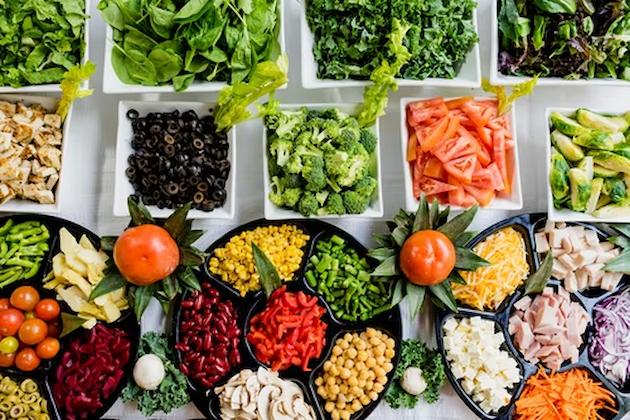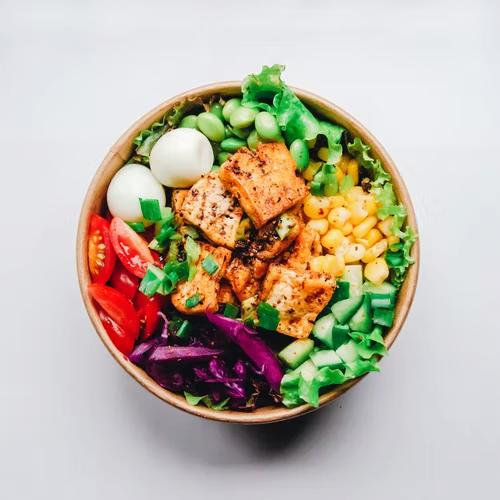
What Foods Can Help You Control Blood Sugar?
While no single food can miraculously prevent you from getting diabetes, certain foods have been shown in studies to help maintain healthy blood sugar levels over time. Continue reading to find out which foods can help lower blood sugar levels and which foods you should eat when your blood sugar is higher than you’d like it to be.
What Are The Typical Blood Sugar Ranges?
Before we begin, let’s review some definitions of what “normal blood sugar” means for people without diabetes:
- A typical “fasting” blood sugar reading is 99 mg/dL or less, taken right after waking up.
- Anytime during the day, without regard to when you last ate, a random blood glucose test should result in reading under 200 mg/dL.
Your doctor will go over specific blood sugar targets with you if you have diabetes (of any kind). Based on a variety of variables, these objectives may change.
Diabetes Blood Sugar Levels For Diagnosis
Diabetes can be identified through blood glucose tests if any of the following levels are present:
- Fasting blood glucose of 126 mg/dL or higher (100-125 mg/dL is considered pre-diabetes)
- Random blood glucose of 200 mg/dL or higher
How To Reduce Blood Sugar Levels Over Time
How To Lower Blood Sugar (non-food Related Ways)
The majority of people believe that lowering blood sugar levels is solely a result of the foods you consume. The blood sugar levels can be impacted by a wide range of additional factors, though. These include things like hormones, stress levels, and activity levels. It has been demonstrated that the following techniques can lower blood sugar levels over time:
- Engage in regular physical activity.
- Always consume carbohydrates high in fiber.
- throughout the day, sip water.
- Manage stress levels.
- regular monitoring of blood sugar levels.
- Get enough sleep.
- Consume plenty of fruits and vegetables and a nutrient-rich diet.

List Of Foods That Lower Blood Sugar Levels (and Promote Blood Sugar Balance) Over Time
No food has been shown to instantly lower blood sugar, but certain foods have been shown to support stable blood sugar levels and lower average blood glucose levels when consumed regularly over time.
What foods then help lower blood sugar?
- Oats
- Beans and lentils
- Salmon and other fatty fish
- Eggs
- Nuts and nut butter
- Seeds and seed butter
- Unsweetened yogurt and kefir
- Fermented vegetables
- Leafy greens
- Grapes
- Blueberries
- Apples
- Citrus fruit
- Avocados
Let’s take a closer look at each of these foods…
Oats
Oats are a higher protein and fiber grain alternative to conventional flours, so I use them in many of my recipes. Oats are a good source of soluble fiber, which is known to support normal blood sugar levels.
Beans And Lentils
Beans are high in fiber and protein, two nutrients that are known to help maintain blood sugar balance, just like oats are. And more specifically, they provide a sizable quantity of resistant starch and soluble fiber (like oats). Both of these carbohydrate types take longer for our bodies to digest, which supports more stable blood sugar levels.
Animal Proteins: Salmon, Other Fatty Fish, And Eggs
In addition to providing a quality source of protein and fat, fatty fish (such as salmon) and eggs are high in vitamins, minerals, and antioxidants. Both protein and fat work to stabilize blood sugar levels by buffering your body’s response to meals.
Nuts, Seeds, And Nut/seed Butters
All three of the nutrients we need to balance our blood sugar are present in nuts, seeds, and their corresponding butter, which are excellent sources of protein, plant-based fat, and fiber. In addition to supporting healthy blood sugar levels, it has been demonstrated that these foods also help you feel fuller and more satisfied for longer.
Fermented Foods: Yogurt, Kefir, Vegetables
Probiotics are found in foods that have been fermented, including yogurt, kefir, kimchi, sauerkraut, and others. Some studies suggest that a probiotic-rich diet can lower blood insulin levels in addition to blood glucose levels.
Leafy Greens
Leafy greens can be easily incorporated into a variety of dishes, such as smoothies, omelettes, and salads. They are a great source of fiber and micronutrients (vitamins and minerals). Additionally, as was previously mentioned, foods with more fiber help support normal blood sugar levels.
Grapes, Blueberries, And Apples
The idea that fruit shouldn’t be consumed by those trying to balance their blood sugar is one of the biggest blood sugar management myths still in circulation. The truth is, however, that a fruit-rich diet can help manage diabetes already present and is protective against the onset of type 2 diabetes and pre-diabetes. More specifically, studies have revealed a link between increased intake of grapes, blueberries, and/or apples and a lower risk of type 2 diabetes.
Citrus Fruit
Consuming whole citrus fruits, such as grapefruit and oranges, may help support healthy blood sugar levels as well as other related markers like insulin levels and hemoglobin A1c.
Avocados
Avocados are not only delicious, but they also contain a lot of fiber and plant-based fats. Both of these nutrients promote a stable supply of energy to the bloodstream, also known as blood sugar balance, by slowing down the absorption process.
In addition to the foods I’ve mentioned above, there are numerous other foods that can gradually lower blood sugar levels.
What Actions Can You Take To Immediately Lower Your Blood Sugar?
However, discussing foods that help lower blood sugar over time does not address what we should do when blood sugar levels are elevated. Although it can be applied to all types of diabetes, this discussion is frequently more pertinent to people with insulin-dependent type 2 diabetes and type 1 diabetes.
How To Reduce Blood Sugar Immediately
The best ways to instantly lower blood sugar can vary depending on a number of variables, but the following methods are typically effective.*
- Go for a walk
- Drink a large glass of water
- Take rapid-acting insulin if directed by your doctor
If ketones are also present, extremely high blood sugar (>250mg/dL) can be a life-threatening condition. When blood sugars rise to this level, diabetic ketoacidosis (DKA) can occur. If/when this occurs, talk about your strategy with your doctor. Knowing when to go to the emergency room and when to stay at home to manage your blood sugar is part of this.
If blood sugar levels are higher than 250 mg/dL, exercise might not be recommended. Before trying to exercise when your blood sugar is this high, talk this over with your doctor.
Find more healthy food & lifestyle next!
- How Long Does Cooked Ground Beef Keep in the Fridge?
- How Long Does Pizza Last in the Fridge – How to Check
- How Long to Bake Chicken Breast at 400 – How to Cook
- How Long Does It Take For Shrooms To Kick In?
- How To Peel Fruit And Veg
- How Long Can You Keep Raw Chicken in the Fridge?
- Is a Lemon a Fruit or a Vegetable?
- How Much Vitamin C Do You Need During Pregnancy?
- Can My Dog Drink Apple Juice? You Should Know!
- Bye Bye Belly Juice Side Effects You Should Know





Average Rating